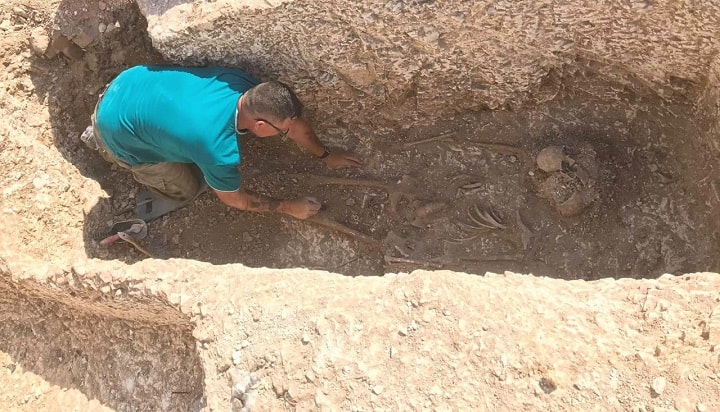
Archaeologist Steve Tomlinson, from Birchington, was among the team who discovered some incredible Anglo-Saxon finds at a building site n Deal last year.
The uncovering of the burial site has since featured on BBC Two’s Digging for Britain. Here, Steve introduces himself and shares his knowledge of the Anglo-Saxon burial site:
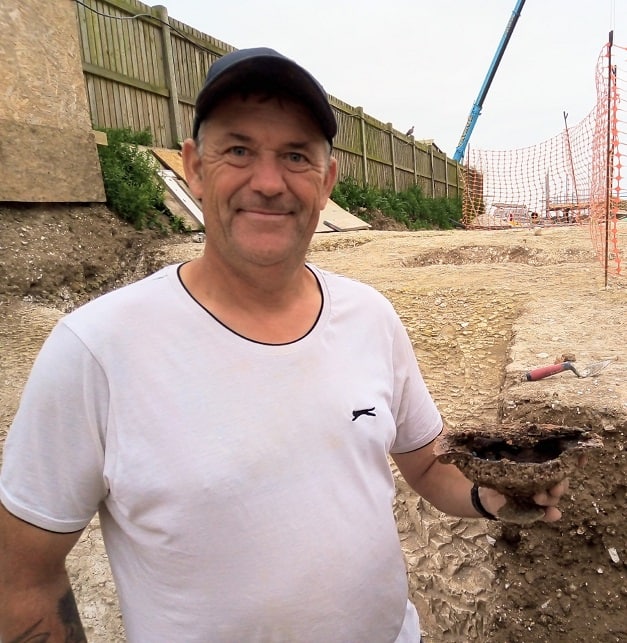
I have been working as an archaeologist for a few years under a professional body – the Chartered Institute for Archaeologists (CIFA).
Many years ago I started working in the environmental sector and graduated at university with a Landscape Management degree and then a Master’s degree in Environmental Law.
But I have always loved history and it was always my aim to one day become an archaeologist. That career change eventually came and within the last few years I have managed to work on some great archaeological sites, ranging from the Neolithic period -roughly about 8,000 years BC – right through to the late Medieval period. Some of those sites have interacted with each other and many periods of time can be found within one site.
The amazing high-status site in Deal, working with Kent Archaeological Projects in the early summer of 2021, was incredible and, as my report will tell, it will never leave me – it’s not every day you have an opportunity to work on an extremely special site like this.
Anglo-Saxon burials in Deal
In 2021 the discovery of more than 90 burials was made on a building site – currently being developed by ATS Ltd in St Richards Road, Deal – by the archaeologist and director of Kent Archaeological Projects, Tim Allen.
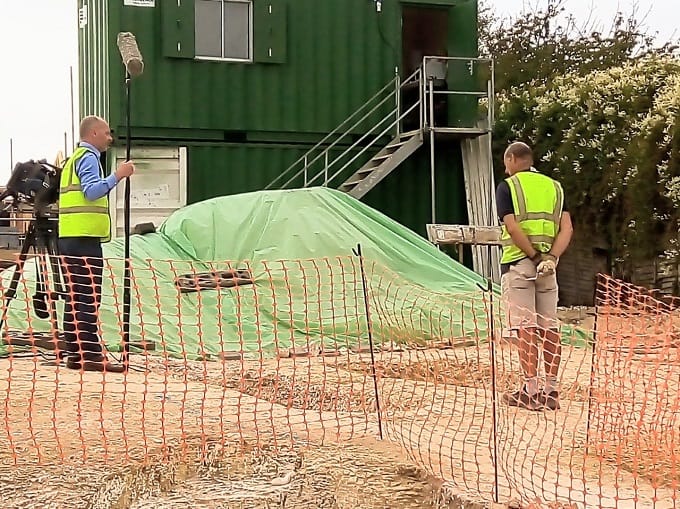
The site turned out to be of immense interest, not least because of its very early date history and the exceptional nature of the finds, most in the form of grave goods recovered from the burials.
The burial ground and the finds have been shown on local Meridian TV, but also, because of their importance, on BBC2’s Digging for Britain with Professor Alice Roberts (Series 9, Episode 1).
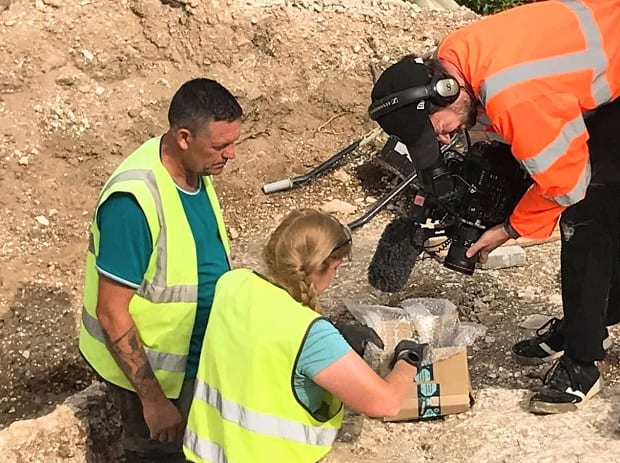
Site History
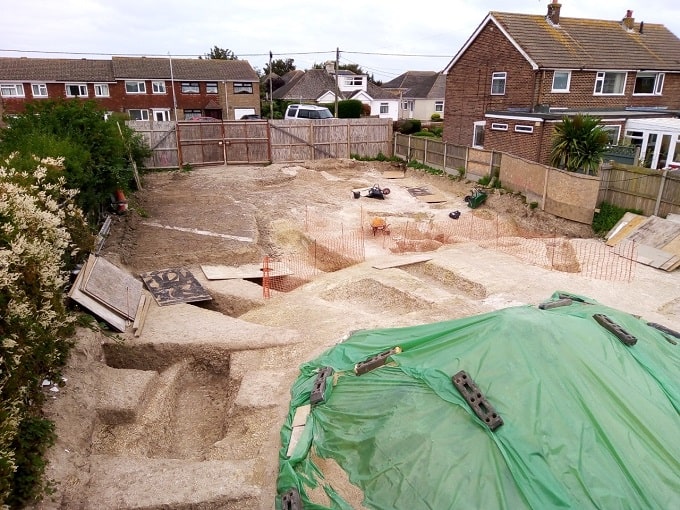
The site itself originally dates back to the late Neolithic or Early Bronze Age period (some 4000 years ago, in about 2300 BC), when a massive, monumental structure was constructed on top of a high ridge.
The surviving remains of the structure consisted of a 2m-deep, 3.5m-wide circular ditch with a diameter 32 metres, and it was used, at least in part, as a cemetery for some of the early inhabitants of the Deal area, with the skeletal remains of a 12-year-old boy being buried in the exact centre of the ring-ditch. This was just one of several ‘crouched’ burials of this period, so-called because the bodies were placed in their graves on their sides with their knees raised and arms folded.
The monument was clearly still visible some 2500 years later, in about AD 550, when it was re-used, again, as a burial ground, by some recent Germanic invaders, the Anglo-Saxons who, in the form of a tribe called the Jutes, had arrived in Kent about one hundred years earlier.
These were amongst the first English-speaking people to arrive in Britain, meaning the use of the site as a burial ground during this period represents part of the very beginning of what would later become England.
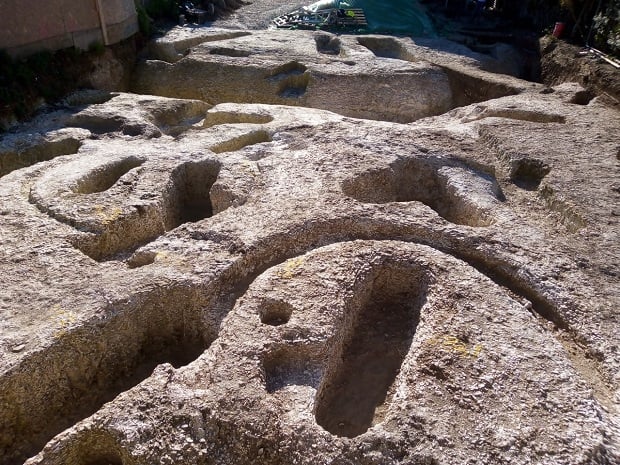
The first phase of excavations focused on the Late Neolithic or Early Bronze Age crouched burials along with some amazing beaker vessels. These vessels provide the name for the Beaker Culture, used to describe the culture of the inhabitants of the Deal area and more widely during this period.
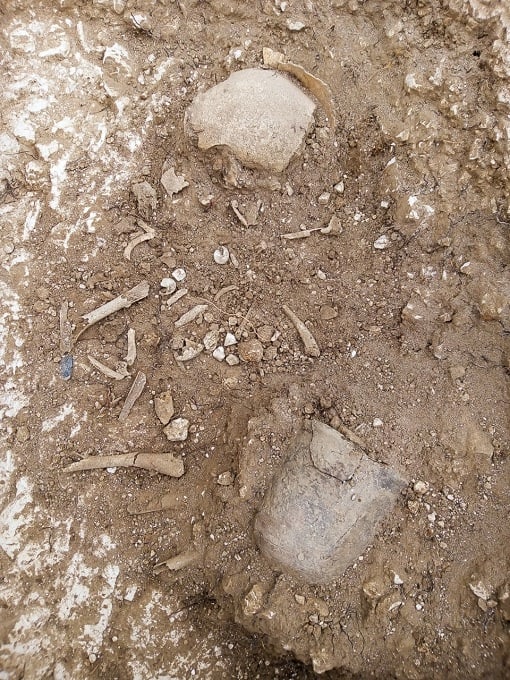
Most of the Anglo-Saxon graves occurred outside of the ring-ditch but one found within it was of particular importance. It contained the well-preserved remains of a Jutish warrior, clearly a high-status nobleman and thought to be the one of highest-status male Anglo Saxon burials found in Kent.
The type of grave goods found with him indicate he was buried in about AD 550 and he may well have died in battle; his shield had been placed over his skull, which appeared to have been brutally smashed in before burial. He had been about 5ft 6inch tall and was buried with elite-status grave-goods in the form of a ring sword, an ornate bronze belt buckle, a spear, two knives and, at his feet, a composite bronze-and-wood bucket with two horse motifs on its rim.
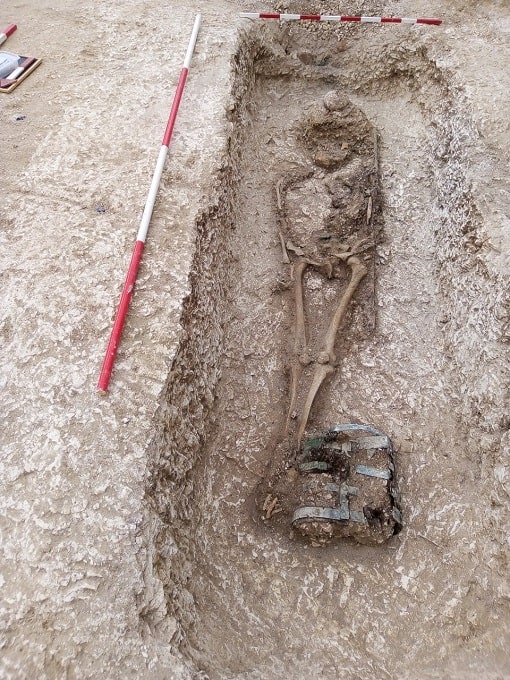
A large grave lying right next to and parallel with the nobleman’s grave contained the skeletons of a horse and a large dog, both almost certainly belonging to the nobleman and buried with him at the same time, at a time when a horse cult was part of Jutish culture – the first semi-mythical Jutish chiefs were called Horsa and Hengist, the latter meaning stallion.
The graves of many other well-preserved Jutish noblemen and noble women were excavated (one shown below), with the noblewomen often being buried with sets of keys (signifying authority of the household), beautiful brooches and necklaces, some containing gold and precious and semi-precious stones, some originating in what is now Sri Lanka. The burials show the same broad pattern; the bodies were laid on their backs in rectangular graves along with their most-prized possessions, both to display their status during the burial rite and to be used during the afterlife.
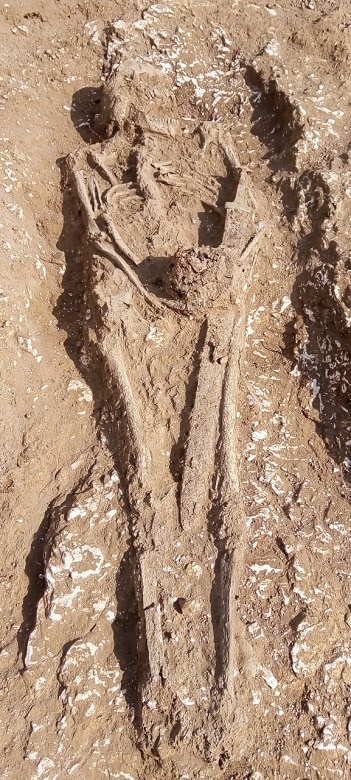
In summary, this excavation told us a great deal about the lifestyle of these Early Anglo-Saxons as they took over and imposed their rule over Kent in the century and a half following the withdrawal of the Roman army in AD 408. The remains overall, whether of the Beaker Period or the Early Anglo-Saxon Period, are undoubtedly some of the most important to have been found in the Dover district.
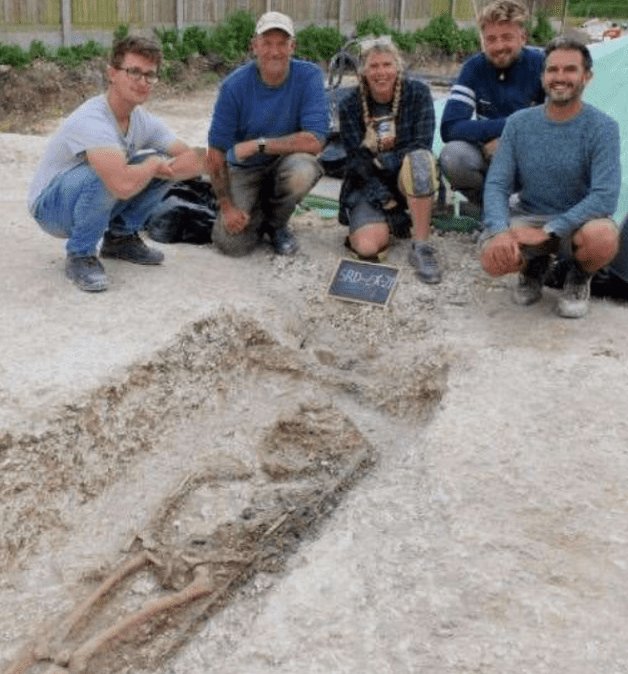
As an archaeologist and on a personal basis I have been asked how it felt to work on such a special archaeological dig. What sticks in my mind are the many unforgettable moments, when yet another amazing find was made or, when we excavated the Beaker Period ring-ditch, slowly realising just how massive and deep it was, especially when we realised that the original prehistoric diggers could only have used tools made of wood, bone or stone. They must have been an extraordinarily tough lot!
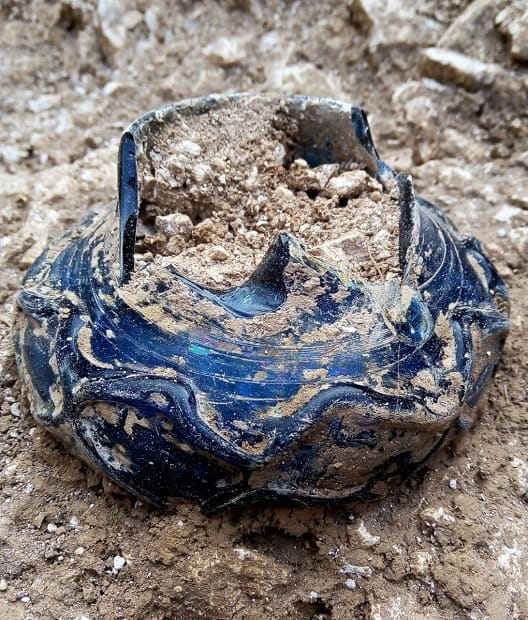
This site is probably one in a million, one that I couldn’t wait to get back to the next day and one that I will never forget. I loved it all. As we excavated the graves of people from the lower ranks of society to the most well-off and high-status, I began to understand something of their lives, whether they lived 4000 years ago in the Late Neolithic or Early Bronze Age or 1,500 years ago in the Jutish/Early Anglo-Saxon Period. I certainly appreciate the immensity of the rich heritage that we enjoy today but often take for granted.
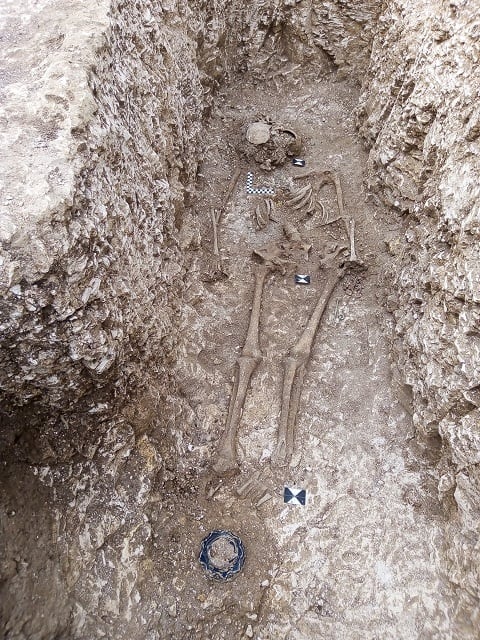
Some of the finds were staggering, especially from the Anglo-Saxon period. Every archaeologist who worked on that site had something, and it was a great team effort. What sticks in my mind the most has to be excavating the very high-status 7th Century Anglo Saxon and wealthy (likely women’s grave), who at the time could well have been dining with the King of the Anglo Saxons, and certainly the elite of the day.
The finds that grave produced were amazing, I will never forget it. It really did take you back around 1,500 years ago, but the quality of workmanship on those elite finds made it feel like yesterday.

